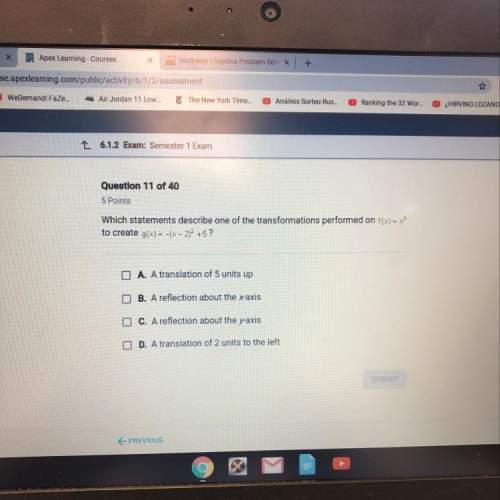
Mathematics, 13.10.2020 04:01 talia43
You wake up with a feeling of total bliss and an irresistible desire to read about cognitive science. You go to the health center where Doctor A and Doctor B consider the possibility of cogncitis, a brain condition due to a virus. Doctor A gives this hypothesis a prior probability of 070thus 30 probability for NOT cogscitin whie Doctor B gives it a prior probability of 0.20 (thus 0.80 probability for NOT cogscitin. They order three tests and the results come back sequenitially test 1 first, test 2 second, and test 3 third. They engage in Bayesian updating after seeing the results of each best Test 1comes back first and it is positive. Here are the likelihoods for the positive result for Test 1 cogscitis0.70 not cogscitis 0.10 Using Bayes' rule, calculate the posterior probabilities arrived at by each doctor for the hypothesis that you DO have cogscitis. After Test 1, what is Doctor A's posterior probability for the hypothesis that you DO have cogscitis? After Test 1, what is Doctor B's posterior probability for the hypothesis that you DO have cogscitis? Test 2 comes back next and it is positive. Here are the ikelihoods for the positive resulit for Test 2 cogscitis 0.60 not cogscitis 0.20 Using Bayes rule, update the posterior probabilities arrived at by each doctor for the hypothesis that you DO have cogscitis. Hint: Use your posterior probability after seeing the results of Test 1 as the prior probability before seeing the results of Test 2. After Test 2, what is Doctor A's posterior probability for the hypothesis that you DO have cogscitis? After Test 2, what is Doctor B's posterior probability for the hypothesis that you DO have cogscitis? Test 3 comes back next and it is positive. Here are the likelihoods for the positive resulit for Test 3: cogscitis 0.90 not cogscitiso.10 Using Bayes' rule, update the posterior probabilitis arrived at by each doctor for the hypothesis that you DO have cogscitis. Hint: Use your posterior probability after seeing the results of Test 2 as the prior probability before seeing the results of Test 3. After Test 3, what is Doctor A's posterior probability for the hypothesis that you DO have cogscitis? After Test 3, what is Doctor B's posterior probability for the hypothesis that you DO have cogscitis?

Answers: 3
Another question on Mathematics

Mathematics, 20.06.2019 18:04
The parking lot of a store has the shape shown. all angles are right angles. what is the area of the parking lot?
Answers: 3

Mathematics, 21.06.2019 17:30
Which of the following is true about the graph of f(x)=7^x. select all that apply. a= it intercepts the x axis b=it intercepts both axis c=it intercepts neither d=it intercepts the y axis
Answers: 1

Mathematics, 21.06.2019 18:00
You spin the spinner shown below once. each sector shown has an equal area. what is p(beaver ) p(beaver)? if necessary, round your answer to 2 2 decimal places.
Answers: 2

Mathematics, 21.06.2019 19:30
Are triangles the congruent? write the congruency statement.what is the congruency that proves they are congruent? what is the perimeter of ∆pqr?
Answers: 1
You know the right answer?
You wake up with a feeling of total bliss and an irresistible desire to read about cognitive science...
Questions


Chemistry, 19.09.2019 12:20




Biology, 19.09.2019 12:20


Mathematics, 19.09.2019 12:20

Biology, 19.09.2019 12:20


Mathematics, 19.09.2019 12:20


Health, 19.09.2019 12:20

History, 19.09.2019 12:20





Mathematics, 19.09.2019 12:20




